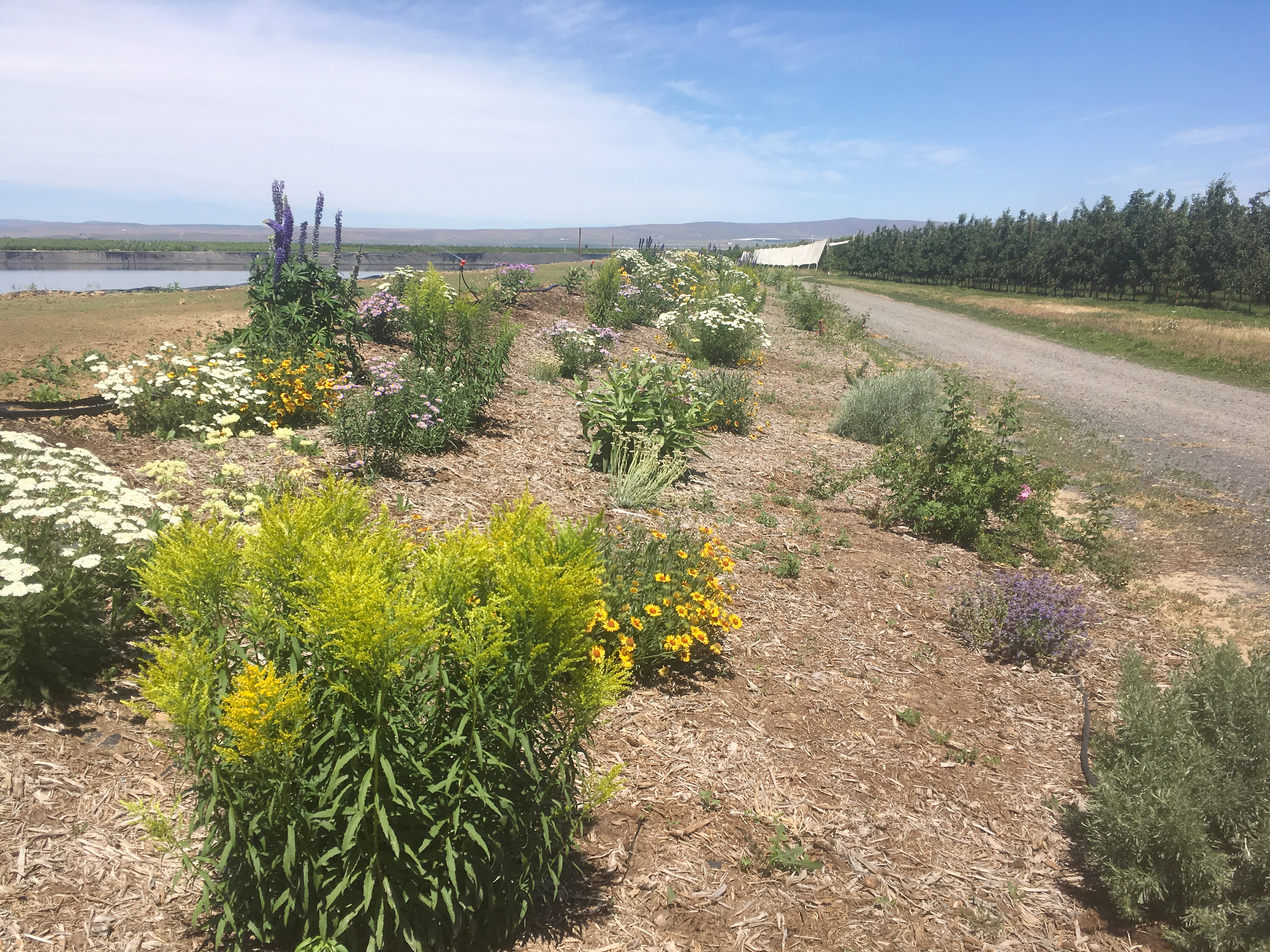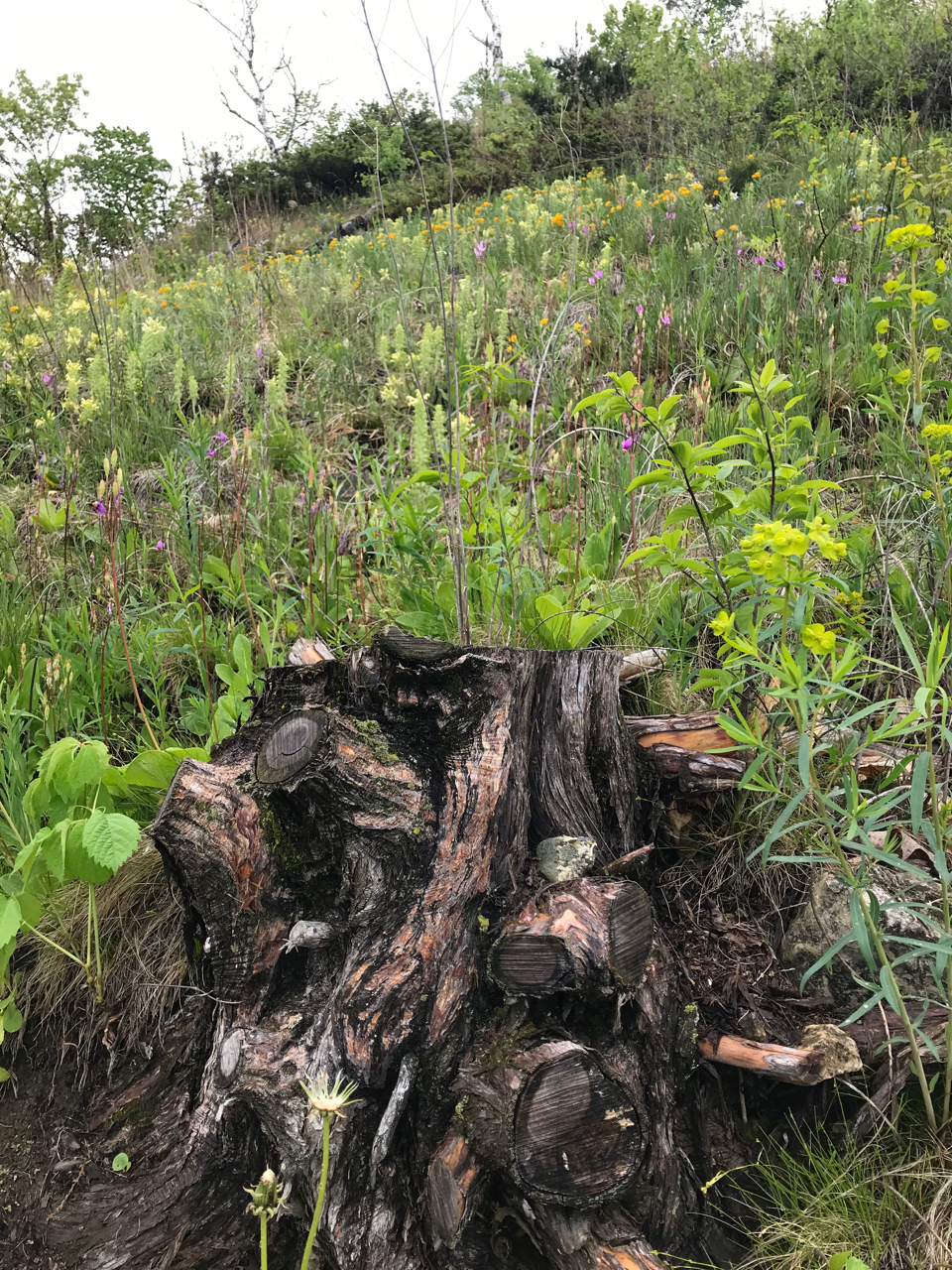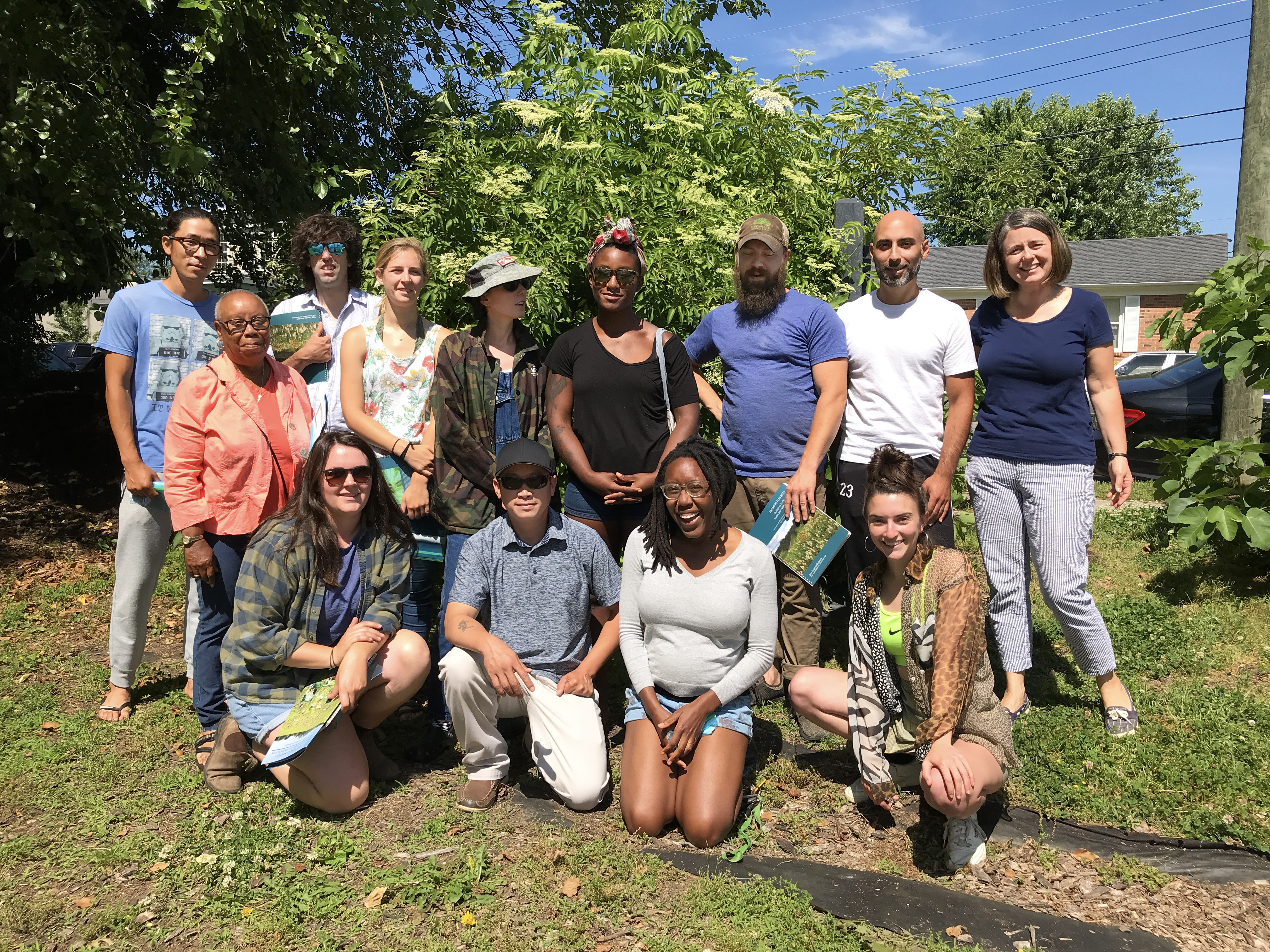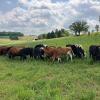Select monthly updates from our team of restoration ecologists, entomologists, plant ecologists, and researchers.
The Xerces Society manages the largest pollinator conservation program in the world. We work with farmers, gardeners, land managers, agency staff, and others to create habitat for bees, butterflies, and beneficial insects—and hundreds of thousands of acres of flower-rich habitat have been planted. We also offer certifications: Bee Better Certification for farmers and food companies who are committed to supporting pollinator conservation in agricultural lands, and Bee City USA and Bee Campus USA certifications for cities and colleges dedicated to making the world safer for pollinators.
With staff based in more than a dozen states, and offering a diverse array of expertise, it can be challenging to summarize the impactful work being done by our team of restoration ecologists, entomologists, plant ecologists, and researchers. Therefore, we have compiled select pollinator conservation program updates into monthly digests. June’s featured staff share their work with inspiring partners spanning large-scale agriculture in central Washington, to family farms in Wisconsin, to a unique urban agriculture fellowship program in Virginia.
Expanding Xerces’ Pollinator Conservation Work to the Apple Orchards of Central Washington
Kitty Bolte, Pollinator Habitat Specialist
Although the Xerces Society is headquartered in the Pacific Northwest, we are just beginning to work in the rain shadow—the drier areas east of the Cascade mountains. While western Washington and Oregon have mild climates with abundant rainfall, the eastern parts of those states are basically deserts, with cold winters, hot summers, and as little as eight inches of precipitation per year in some areas. Despite these harsh conditions, agriculture thrives in this region. Farmers in the rain shadow produce dryland crops like wheat in addition to specialty crops such as apples, cherries, pears, and hops, benefiting from relatively little pest and disease pressure when compared with more moist parts of the country.
It was tree fruit crops, and the Xerces-General Mills partnership, that finally brought us over the mountains to central Washington to meet with grower-members of the Tree Top cooperative interested in pollinator conservation. Although apples, cherries, and pears are all pollinator-dependent, and studies from other regions have found that planting pollinator meadows and hedgerows on farms can improve pollination and fruit quality, little work has been done in eastern Washington exploring the value of pollinator plantings to the orchard systems there.
In the summer and fall of 2017, we met with several growers who were interested in experimenting with planting pollinator conservation projects, and I set to work researching what plants might be suitable for pollinator conservation projects in the region, as well as looking for native plant nurseries and seed companies.
In spring 2018 we installed our first planting, using native wildflower and shrub plugs to cover the formerly bare bands of an irrigation pond with pollinator-attractive plants. Then in the fall we seeded an additional 9 acres with a similar mix of plants and planted another hedgerow.
This spring, I was able to return to Washington to check on the original plantings as well as meet with additional growers who heard about the work and decided they wanted to collaborate with us as well. I was really excited to see that our original planting from a year ago was blooming and thriving, and that the seeds we planted last fall had germinated and begun to grow.
Although this first project has been successful so far, as we continue to expand our work in this region, we’ll be able to refine our processes, developing an understanding of what plants grow well from seed versus plugs, as well as which bees and beneficial insects are attracted to which plants. This fall, we have plans to seed several more acres of pollinator habitat in addition to planting more hedgerows and seeding our first understory cover crops. Here’s to another year of experimenting and learning!

Sharing Conservation Inspiration with Farmers in Wisconsin
Karin Jokela, Farm Bill Pollinator Conservation Planner, Minnesota
Over the winter, I presented at several Midwest farming conferences. When talking with farmer audiences, my goal is to shine a light on all the helpful native insects that live on farms (or should live on farms!), and how we can create strategic, high-quality habitat to attract them. I hope to persuade farmers that conservation of natural habitat can reduce both pest problems and the need for insecticides, while also improving crop yields and adding greater functionality and beauty to the agricultural landscape. For many, this message is new and sometimes counterintuitive; control over nature is the dominant paradigm in agriculture. However, I am always impressed by some of the farmers in the audience who are already actively managing their land for beneficial insects, and it’s one of the great privileges of my job to be invited to discuss ways to further enhance their on-farm habitat.
Two Wisconsin farmers invited me out for a visit this spring after having connected at winter conferences. Joe Langmeier of Prairie du Chien requested my help in designing a conservation biological control system for his family’s 900-acre farm, where they currently graze dairy cows and grow organic vegetables for wholesale. Based on the way he rattled off information about lacewings, predatory beetles, wasps, syrphid flies, and parasitoids, it was evident that he’d been studying Xerces’ conservation biological control literature. Further, he has seen conservation biological control in action. Joe recounted a story from last season when he observed a parasitic wasp attacking a flea beetle, his most problematic pest. As he crouched in his field watching the tiny battle, he thought, “THIS is the solution. We need to do more to attract these natural enemies to our farm.”
Joe and his family have already adopted many biodiversity-enhancing practices on the farm, including: rotational grazing, minimal tillage, diverse cover crop mixes and rotations, and minimal pesticide applications. The future enhancements I recommended include flowering hedgerows, large prairie restorations, riparian area plantings, and forest management to control invasive species and restore a diverse flowering understory. Joe was the one who suggested many of these enhancements, but he needed my help figuring out the best techniques for organic establishment, and selecting the right native plant species to include in the plantings to maximize diversity and abundance of natural enemies. I also helped him navigate which of these enhancements would be eligible for cost share through Farm Bill conservation programs, and for those that are not eligible, I recommended other DIY cost-effective implementation strategies. I left the Langmeier Farm feeling both humbled and eager to see Joe’s vision realized. I look forward to hearing more of his testimonies over the years about heroic natural enemies keeping crop pests in check.
I also had the pleasure of visiting Ecker’s Apple Farm in Trempealeau, WI. This is an amazingly beautiful part of the Driftless Area, where dramatic bluffs tower over farm fields that slope down to the Mississippi River. Like the Langmeiers, the Eckers have been managing for pollinators and beneficial insects on their farm, but they sought my assistance in creating a few additional enhancements—including windbreaks, forest management recommendations, and suggestions for how to reconstruct a prairie in an old crop field and connect it with a remnant bluff prairie that is being restored with the help of the U.S. Fish and Wildlife Service. Their bluff prairie was a sight to behold this spring. Although pollinators weren’t flying due to the cool and cloudy weather, evidence of a thriving bumble bee population was all around. Conservative plant species like woody betony (Pedicularis canadensis) and Amethyst shooting star (Dodecatheon amethystinum)—both known to be pollinated by bumble bee queens—were prolific, and approximately 75% pollinated. I was giddy to see such an intact remnant prairie community, and excited to interpret my observations for Sara Ecker, the orchard manager and my tour guide, who admitted that she was unfamiliar with these plants. As I explained to Sara, this habitat bodes well for her apple orchard down the hill, as bumble bees are excellent crop pollinators. Furthermore, offering a diverse floral diet will help keep pollinators healthy and more resilient to environmental stressors.
Similar to the Langmeier family, the Eckers have embraced the idea of farming with nature, but they still needed my technical assessment of the natural areas on their farm in order to develop nuanced strategies for addressing habitat deficiencies. It is a privilege to work with these thoughtful and professional farmers, and I see our relationship as mutually beneficial. We both learn from one another—during the site visit and in the ongoing technical conversation that inevitably plays out over the weeks, months and years that follow the initial contact. I get to bring their stories to subsequent farmers and to future conference workshops, and together we are creating a vision for a different, more conservation-focused future in farming.

Expanding Xerces’ Pollinator Conservation Work into Urban Education
Nancy Lee Adamson, Senior Pollinator Conservation Specialist, Southeastern Region
Tricycle Urban Agriculture in Richmond, Virginia is on a mission to grow a healthy future through urban agriculture. For three years the Xerces Society and the USDA Natural Resources Conservation Service (NRCS) have partnered with Tricycle to provide pollinator conservation workshops as part of Tricycle’s yearlong fellowship program providing in-depth training and hands-on experience at two urban farms. I have provided these workshops annually for the past three years, which also highlight the importance of providing habitat for other agriculturally beneficial insects—predatory and parasitoid species, which are the natural enemies of crop pests. We call pollinators, predators, and parasitoids “beneficial” insects as shorthand for their value in agriculture, but all insects are vital for our ecosystems and our own well-being.
Each year, as part of the workshop, we visit the farm closest to the training room to look for beneficial insects and assess the habitat at the farm, looking particularly at the diversity of crops and the surrounding landscape. Tricycle has planted a wonderful collection of native perennials and shrubs, as well as perennial edibles like blackberries and blueberries. There are also fantastic flowering shade trees growing around the perimeter of the site.
Each fellow in Tricycle’s program gets a copy of Xerces’ Pollinator Habitat Assessment Form and Guide to help them learn to see the landscape from an insect’s perspective. By the time my workshop is held, they’ve usually learned about soils and pest insects, so I emphasize the value of plant diversity to support diverse beneficial insects. This, in turn, serves to improve crop quality and volume and reduce the likelihood of pest outbreaks.
After the workshop this year, Beth Nelson, Fellowship Program Manager at Tricycle, and I discussed the fact that, despite the wonderful habitat at the farm site we visit, there seems to consistently be a much more diverse and abundant set of insects at their other farm. I suggested they include monitoring in the students’ work schedule using the scouting tools used for Xerces’ Conservation Biocontrol Short Courses. By scouting for insects on a regular basis, farmers learn to recognize how many predatory and parasitoid insects there are in their landscapes, and increase their awareness of potential negative impacts of pesticides (even organic pesticides—a topic further discussed here).
When we use the tools during workshops, about 95% of the insects and arachnids collected are beneficials. We always find lady beetles (adults and larvae), spiders, wasps, and syrphid flies, and often find lacewing larvae and assassin bugs. Most of the pest species are tiny, such as aphids or white flies. This exercise really opens the eyes of farmers, NRCS planners, and home gardeners to the presence and value of the predatory and parasitoids eating those pests!
Learning the insects can seem intimidating at first, but usually people know more than they realize, and Xerces’ Habitat Planning for Beneficial Insects guide has an excellent set of photos and descriptions, with size bars, to help with the species they don’t recognize.
I’m looking forward to hearing what the students learn, and delving into further potential causes of the difference in fauna between the two farms at which Tricycle works.

Further Reading
Learn more about the Xerces Society’s Pollinator Conservation Program.





